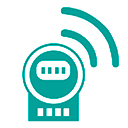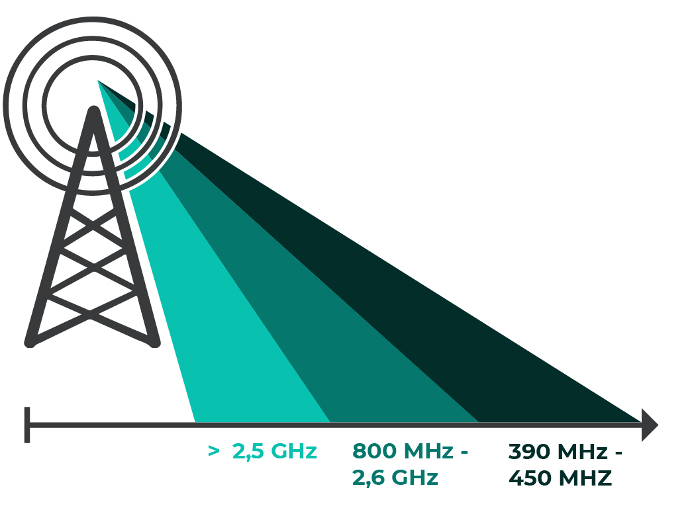What is 450 MHz?
The 450 MHz bandwidth is used for various communication purposes, including IoT applications. It offers a good balance between range and ability to penetrate obstacles such as walls, making it particularly suitable for outdoor and indoor applications. This frequency is often used for industrial IoT solutions. Germany and some other European countries have a specially regulated frequency band for monitoring critical infrastructure.
Typical applications for 450 MHz

Submetering
Remote reading of electricity, gas and water meters
Oil and gas industry
System monitoring and observation of the pipelines
Smart Agriculture
Monitoring soil moisture and weather conditions

Industrial IoT (IIoT)
Monitoring systems and machines

Smart City
Street lighting, traffic tracking and other remote monitoring systems
Environmental monitoring
Monitoring air and water quality
450 MHz compared to other technologies
450 MHz offers a good balance between range, penetration capability and energy efficiency. Compared to technologies such as LoRaWAN (868/915 MHz), NB-IoT (800-900 MHz) and Sigfox (868/902 MHz), 450 MHz often has a slightly higher range and better penetration capability through obstacles such as walls. However, it is important to consider the specific requirements of each project in order to select the optimal technology.

The advantages of 450 megahertz
Frequency ranges: The 450 MHz frequency utilises lower frequencies and has a longer wavelength. These propagate better around obstacles and are therefore less susceptible to absorption and reflection. This achieves a greater range and better coverage in urban and rural environments.
Transmission power and receiver sensitivity: The technologies used in the 450 MHz range are often designed for high transmission power and receiver sensitivity, which supports communication over longer distances without the need for large infrastructures.
Regulatory aspects: The 450 MHz band is reserved in many regions for specific applications such as IoT and industrial communication, which promotes the development of technologies that are tuned to this frequency and optimise the range.
Overall, the 450 MHz frequency band offers a robust solution for IoT applications that require wide coverage and reliable communication over long distances, especially in environments with many obstacles.
450 MHz frequency use in Germany and Austria: Licence obligation, regulations and requirements
In Germany and Austria, the use of this frequency is subject to a licence. Find out more about the regulatory provisions and availability.
Limitations of the 450 MHz technology
Bandwidth limitation: The 450 MHz band has a more limited bandwidth compared to higher frequencies such as 868 MHz or 915 MHz. This can affect data transmission speeds, especially when large amounts of data need to be transmitted.
Interference: Although lower frequencies such as 450 MHz usually have better penetration, they can also be more susceptible to interference, especially when multiple systems or services operate in the same frequency range.
Scalability: Due to the limited bandwidth, the scalability of networks based on 450 MHz can be challenging, especially when many devices need to operate in a limited geographical area.
Development of devices: Due to the special requirements of the 450 MHz band, the development costs for devices and infrastructures can be higher than for technologies with a broader range of applications.
Licence: 450 MHz technology is not licence-free and is subject to strict regulatory requirements in many countries, including Germany and Austria. This can lead to additional costs and administrative hurdles.


